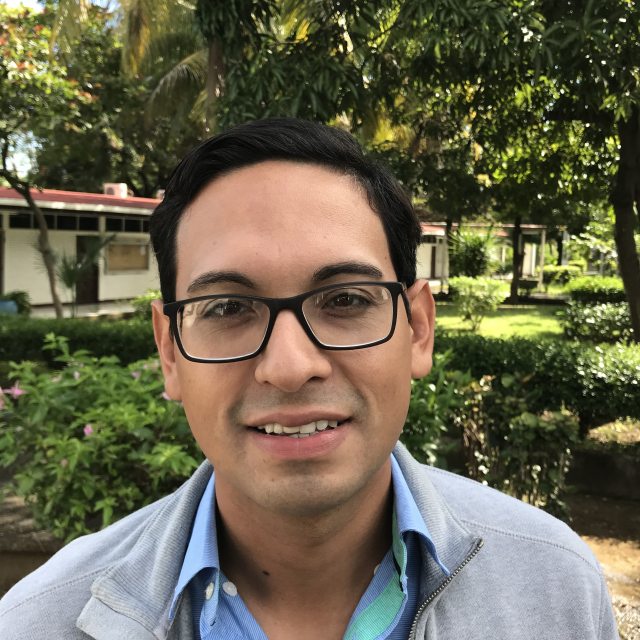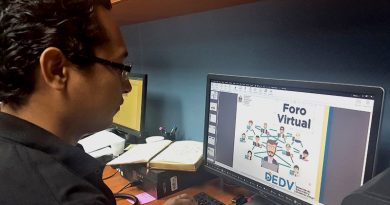An Objective Look at Language Change
An Objective Look at Language Change
By Roberto C. Villarreal
(1) Over time, countries, communities, and people change and, parallel to this, their languages change as well. What in the past was Latin, for example, now is the so called Romance Languages (French, Spanish, Portuguese, and Italian). Old English forms hove, throve, chid, which were the past of the verbs heave, thrive, and chide, respectively, now are found as heaved, thrived, and chided in Modern English (Clark, Eve & Clark, Herb 1979). Similarly, in present times, clear differences have emerged in dialects of the same language. In Yorkshire English (northern England), for instance, only were is used as the past tense of be: I were there, you were there, s/he were there, we were there; while in Appalachian English (West Virginia and parts of various nearby states) things have gone the other way, so that only was has been retained: I was there, you was there, s/he was there, we was there (O’Grady, Archibald, Aronoff, & Rees-Miller 2010). A closer look at these and many more phenomena indicates that linguistic change is natural, inevitable, and continuous, and that it involves sociolinguistic and psycholinguistic factors which cannot easily be separated from one another.
(2) Sociolinguistic studies assert that the most important variables that condition language change are related to social characteristics of the speaker, the hearer, and their contexts. This means that changes in a language depend to a high degree on social attributes of the speaker such as age, gender, social status, ethnicity, religion, occupation, location, and any other important social feature. An example of this can be observed in a change in Nahuatl, one of the indigenous languages spoken in Central America. In this language, the words that men pronounced [w] were pronounced by women with the sound [v]. Therefore, this represents a linguistic change conditioned by the gender of the speakers. The proto version of Nahuatl had the sound *w in the words in discussion; as a result, it can be concluded that the change w/v was adopted by women, but not by men (Campbell 2013).
(3) If it is true that linguistic change is part of the natural evolution of languages, it is fair to ask ourselves: do languages change for the better of for the worst? Are some languages or some varieties of a language better than others because they have not changed much? Apparently, the majority of those “experts” who argue that some languages or language varieties do not have a grammar, or that language is disintegrating, or that the grammars of languages are being ruined due to language change, have not considered the complexity of the factors involved in language variation. Sometimes the true direction of a language change is difficult to see to superficial observers. Some people get scared by the idea that the increasing loss of t in British English, where there is a natural tendency to alter or omit final consonants, may end up destroying a previously stable stop sound system. Others may be shocked by the loss of h in some dialects of English since this may make an exception in the symmetrical organization of the language fricatives; and going further, some may say that African American Vernacular English (AAVE) is a version of Standard American English with mistakes (Pullum 1999). These ideas present clear opposition to language change, which calls for an urgent analysis of what is behind linguistic evolution.
(4) Interpretations of language opposing to change seem to reflect past tendencies based on religious or philosophical preconceptions of their proponents, rather than objective analysis of evidence. For example, many nineteenth-century scholars assumed that the current generation was, by comparison, a race of decadent sinners. Therefore, judging based on the speakers’ behaviors, they took for granted that language had declined from a former state of perfection. In consequence, one of the main goals of Historical Linguists of that time was the restoration of the perfection of language: “A principal goal of this science is to reconstruct the full, pure forms of an original stage from the variously disfigured and mutilated forms which are attested in the individual languages”, affirmed one scholar (Aitchison, in Eschholz 1998). Later on, we find Darwin’s position about language: “the better, the shorter, the easier forms are constantly gaining the upper hand, and they owe their success to their inherent virtue” (Labov 1972). This idea implies that those forms and languages which survive are better than those that die and, at the same time, as Eschholz (1998) notices, this thought confuses the ideas of progress and decay in language with expansion and decline. However, it is reasonable to point out that expansion and decline are the reflection of political and social contexts. For example, Gaelic is dying because of the influence of English, a language with more social and political prestige, not because it became too complicated for people to speak.
(5) Indeed, to assess the direction of languages, if we are allowed to do it, we need to put aside both traditional religious beliefs about language, like the ones in the nineteenth century, and simple assumptions, like Darwin’s thought. The former leads to a nonsensical idealization of the past, and the latter leads to the confusion of progress and decay with expansion and decline without any type of adequate support. We are unable to decide on any clear measure of “language excellence”, even though the majority of linguists are of the opinion that a language with many irregularities should be lower ranked than one that is more regular, economical and transparent. However, as Bell (1976) points out that ranking languages in this way can cause problems: a language which is simple and regular in some aspects probably can be complex and confusing in others. Slobin (1977) compared the progress of Turkish and Yugoslav children as they acquired their respective languages. His findings reveal that Turkish children master the inflection system of their language at the age of two, but struggle with relative clauses until the age of five. On the other hand, Yugoslav children have great problems with the inflectional system of their language not achieving its mastery until the age of five. However, they have no problems with the use of the relative clauses, which they usually use effectively by the age of two. As a result, it is problematic to try to specify what a perfect language is. The most we can do is to admit that some parts of one language may be simpler and, therefore, may be easier to learn than those of another.
(6) Are languages in general moving towards a fixed grammar or a particular direction in structure? If it were the case, they are doing it very slowly; otherwise, we would find more similarities than differences. Historical Linguistics gives us some evidence that languages are moving in different, often opposite, directions. For instance, over the past two thousand years or so, many languages with Indo-European roots seem to be moving from an SOV (Subject-Object-Verb) to an SVO (Subject-Verb-Object) word order (O’Grady, Archibald, Aronoff, & Rees-Miller 2010). Likewise, it has been documented that certain Niger-Congo languages are following the same route. In addition, Williams (1975) points out some historical evidence that shows the development of English from SOV to SVO syntax. Such evidence indicates that the earliest form of Germanic (the ancestor of English) was an SOV language. The following example was inscribed on a golden horn (now called the Golden Horn of Gallehus) about 1600 years ago.
S O V
Ek HlewagastiR HoltijaR horna tawido
I Hlewagastir of Holt horn made
‘I, Hlewagastir of Holt, made the horn’
O’Grady and colleagues also present examples of Old English compounds with OV structure:
manslæht ‘man’ + ‘strike’ ‘manslaughter, murder’
æppelbǣre ‘apple’ + ‘bear’ ‘apple-bearing’
Based on this evidence, if the earliest Germanic was SOV and Modern English is firmly SVO, then it is fair to say that Old English represents a transitional syntactic type. Contrary to this, Mandarin Chinese may be undergoing a change in the opposite direction, from SVO to SOV; while Amharic, Basque, Elamite, Armenian, and Burmese already adopted the SOV word order change (Li & Thompson 1974).
(7) Other contrasts in language change that can be highlighted account for the loss of inflections in English and some Indo-European languages which indicate that they are moving to fixed word order. However, we cannot see this as a general trend since Wappo, a Californian Indian language appears to be doing the reverse, and moving from a system in which grammatical relationships are expressed by word order to one in which they are indicated by an inflectional system (Eschholz 1998). Another case that deserves attention in this respect is the fact that English, Hindi, and, at some degree, French had the same common ancestor, but, nowadays, Hindi has sixteen stop consonants and ten vowels; French has sixteen vowels and six stops; while English has adopted more fricatives than either of these two languages, some of which are very difficult to pronounce for speakers of French and Hindi. Overall, it is fair to conclude that there is not enough evidence to demonstrate that languages are following the same pattern or direction, or that some languages are more or less complex than others, and so “the inherent equality of all languages must be maintained on present evidence” (Greenberg 1963).
(8) Given the case, we can affirm that language change is in no sense wrong! But we have to be aware that it can be undesirable by a community of speakers if communication gets disrupted. If different groups drastically change a language that they previously shared, for sure we may find a context in which intelligibility can be seriously affected or even destroyed. In Tok Pisin (a Creole language spoken in New Guinea), for example, speakers from rural areas have great difficulties in understanding speakers of the urbanized dialects of the language. In England and the United States, on the other hand, the problem of miscommunication is minimal. This is because most people speak the same basic dialect so that their utterance rules and vocabulary are pretty much the same. However, it is possible that they speak this single dialect with different accents. As long as people communicate effectively with one another, there is nothing wrong with this. It is true, however, that sometimes a very marked accent that impedes communication with those around us can be disadvantageous in job application situations. But as Eschholz (1998) says: “a mild degree of regional variation is probably a mark of individuality to be encouraged rather than stamped out.”
(9) There have been many situations of intolerance and narrow-mindedness about language change over history. This is the case of a number of Londoners who censured the variety of regional accents, proclaiming that the English from London and the south east is better than the others, and some of them even claiming that they speak English without an accent. If we explore the past and present times carefully, we find more who believe that some varieties of language are better than others and they have expressed concern over what they perceive to be the deterioration of English: the writer Jonathan Swift (author of Gulliver’s Travels) lamented “the continual corruption of our English tongue” (O’Grady, Archibald, Aronoff, & Rees-Miller 2010) while attacking the use of contractions (They’re for they are). Similarly, in the nineteenth century, Edward S. Gould, a columnist for the New York Evening Post, published a book under the title Good English; or Popular Errors in Language in which he accused newspaper writers and authors of “sensation novels” of ruining the language by introducing “spurious words” like jeopardize, leniency, and underhanded. This tradition about language concern continues to our days through the work of writers as Edwin Newman and John Simon, but also through popular comments such as that certain languages have no grammars, that a particular dialect is a set of language mistakes, and that one language or dialect is better than other.
(10) We should keep in mind that, first, one of the most fundamental claims of modern linguistics is that all languages have a grammar. If a language is spoken, it must have a set of sub-systems: phonetic and phonological, morphological and syntactic. In other words, each spoken language must have rules that govern sounds and as well as form and structure. Sometimes the root of the problem is that unfamiliar languages appear to untrained observers to have no grammar because their grammatical systems are different from those of more frequently studied languages. Second, there is no such a thing as a primitive language, even in places untouched by science and technology. Indeed, as O’Grady and colleagues explain, some of the most complex and rich linguistic phenomena are found in societies that have neither writing nor electricity. Therefore, there is no such a good or bad grammar. In fact, all grammars do essentially the same thing: they guide speakers on how to form and interpret the words and sentences of their language. The form and meaning of those words and sentences vary from language to language and from location to location, but there is no such language that does not work for its speakers. Third, there is no logical reason behind the objection of regional varieties of a language; instead, they should be seen as a sign of genuineness, a mark of where one is from with no reason to be ashamed of. Finally, we all speak with an accent. Accent differences should not be a matter of concern. More worrying should be those contexts where differing dialects lead to unintelligibility or misunderstandings.
(11) An interesting question at this point is what should be done when language change threatens communication in a community of speakers? One possible answer would be to stop language change, but how? If it is, for the most part, natural and inevitable, as we said before. Can an attempt to stop language change by law work? Or would it be a waste of time? There have been some contexts in which legislation has resulted in some reduction of linguistic change in the written language, but in a waste of time in spoken communication. Perhaps it is impossible to limit language change, but it would be healthy to ensure that all members of a linguistic community have at least a common language, and one common variety of that language which they can use. This would be a good way in which peoples can retain their regional dialects and a standard language version. Let us consider the case in Latin America, for example, where some people speak what some linguists call “Standard Spanish” only. They have serious difficulty understanding some indigenous communities within the same country. However, in some rural areas of Central and South America, there are a number of people who are equally fluent in their regional dialects and the most popular variety of Spanish.
(12) Eschholz’s view on language change sounds very reasonable in the sense that the imposition of a standard language cannot be brought about by force. It has to occur spontaneously, and some other times it requires conscious intervention through skillful and tactful social planning. In order for a policy to be accepted, a population must want to speak a particular language or a particular variety of it. In this way, once standardization has occurred, it becomes a strong unifying force and often a source of national pride and symbol of independence.
(13) In sum, language change is natural and inevitable. All languages have changed over time, so it does not make much sense to oppose or resist to change because there is nothing bad in it. Under a linguistics point of view, the features of a language that are not universal and fixed are subject to change over time. Some of these changes are minor, for example, the addition of new words like internet, blog, podcast, morphing, and cyberspace to English (O’Grady, Archibald, Aronoff, & Rees-Miller 2010). Some other changes occur over a long period of time and have a stronger impact on the overall form of the language. In addition, there is no evidence that language is either progressing or decaying and, apparently, several are moving in contrary directions. Linguistics, especially historical linguistics, rejects the view that languages achieve perfection at some point and that changes lead to deterioration and corruption. Indeed, linguists do not even think of trying to rate languages as good or bad, simple or complex. Rather, they investigate language in much the same way that other scientists study medicine or the space. The analysis of language must reflect the way it is actually used, not someone’s idealized vision of how it should be used. In other words, the role of Linguistics is to describe and explain the facts of languages, not to change them. There is no reason to claim that one language or variety of a language is somehow superior to another. Finally, language change is in no sense wrong, but it may, in certain contexts, be socially undesirable. This is the case when it disrupts mutual communication, which is socially and politically inconvenient. In situations like this, standardization, which consists of the adoption of a common variety of a particular language used by the community, but preserving regional dialects or languages, can be useful. However, this process should be carried out gradually, carefully, and tactfully since a community will only adopt a language that they want to speak.
References
Bell, R. 1976. Sociolinguistics: Goals, Approaches, and Problems. London: Batsford.
Campbell, Lyle.2013. Historical Linguistics: An Introduction. MIT Press: Cambridge, MA.
Clark, Eve and Clark, Herb. 1979. When nouns surface as verbs. Language 55.767-811.
Clark P., Virginia, Eschholz Paul and Rosa Alfred. 1998. Language. Boston, Bedford/St.
Martin’s.
Greenberg, J.H. 1963. Essays in Linguistics. Chicago: University Press; Phoenix Books.
Labov, W. 1972. Sociolinguistic Patterns. Philadelphia: University of Pennsylvania Press.
Li, C.N., and Thompson S. A. 1974. Historical change of word order: a case study of Chinese
and its implications. Historical Linguistics. 13-14.
O’Grady, William, Archibald John, Aronoff Mark and Rees-Miller Janie. 2010. Contemporary
Linguistics. Boston, Bedford/St. Martin’s.
Pullum, Geoffrey. 1999. African American Vernacular English is not standard English with
mistakes. The workings of Language 5.39-58.
Slobin, D.I. 1977. Language Learning and Thought. New York: Academic Press.
Williams, Joseph. 1975. Origins of the English Language: A social and Linguistic History. New
York: Free Press.
Author:

M.A. Roberto Carlos Villarreal
Catedrático del Departamento de Inglés de la UNAN-Managua desde 2010. Se desempeñó como docente de educación secundaria en el Instituto Nacional Rosendo López en Rivas, 2007-2012. Posee estudios de maestría en Enseñanza del Inglés como Lengua Extranjera (TESOL) y en Lingüística Aplicada en la Universidad del Sur de Illinois, Carbondale, IL, U.S.A, 2013-2016 y licenciatura en enseñanza del inglés en la UNAN-Managua, 2003-2007. Tiene vasta experiencia en enseñanza de cursos de inglés integral y cursos de inglés comunicativo, así como en las áreas de evaluación de las habilidades del inglés, didáctica y lingüística aplicada. Actualmente, es profesor titular de la carrera de Enseñanza del Inglés como Lengua Extranjera y coordina los programas de posgrado del departamento de Inglés de la UNAN-Managua.





